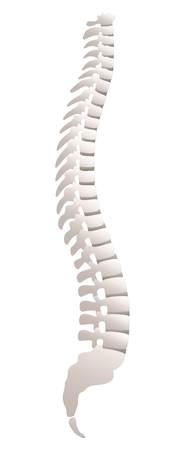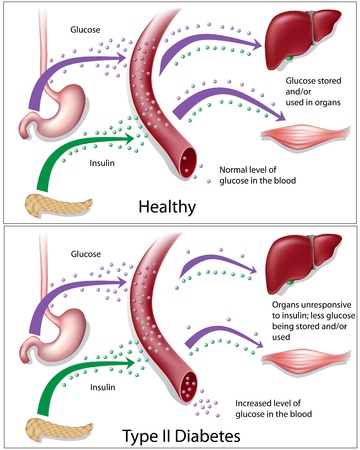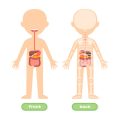1. Understanding Shoulder and Rotator Cuff Injuries
Overview of Common Shoulder Injuries Among Active Adults
Shoulder injuries are a frequent issue for active adults in the U.S., especially those who enjoy sports, fitness classes, or physically demanding jobs. The shoulder is a complex joint that allows for a wide range of motion, making it prone to strains, sprains, and overuse injuries. One of the most common problems is damage to the rotator cuff—a group of muscles and tendons that help stabilize and move your shoulder.
How Do These Injuries Happen?
Shoulder and rotator cuff injuries can occur in several ways:
| Cause | Description | Examples |
|---|---|---|
| Overuse | Repeating the same arm motions over time | Weightlifting, swimming, throwing sports like baseball or football |
| Trauma | A sudden impact or fall onto an outstretched arm | Slipping on ice, contact sports injuries, car accidents |
| Poor Technique | Using improper form during physical activity or exercise | Lifting heavy objects with bad posture, incorrect push-up form |
| Aging/ Degeneration | Wear and tear from normal aging processes | Tendon degeneration in adults over 40, especially in active lifestyles |
Key Symptoms to Watch For
If you’re active and start noticing any of these symptoms, it might be time to check in with your healthcare provider:
- Pain or tenderness in the shoulder, especially when lifting your arm overhead or reaching behind your back
- Weakness or loss of strength in your shoulder or arm
- Limited range of motion—feeling stiff or unable to move your shoulder normally
- Popping, clicking, or grinding sounds when moving your shoulder
- Swelling or bruising around the joint (more common after an injury)
- Pain that gets worse at night or interferes with sleep
Quick Reference: Common Shoulder Injuries in Active Adults
| Injury Type | Main Symptoms | Common Causes |
|---|---|---|
| Rotator Cuff Tear | Pain, weakness, trouble lifting arm above head | Lifting heavy weights, falls, sports accidents |
| Tendinitis/Bursitis | Dull ache, swelling, pain with movement | Repetitive overhead motions (tennis, swimming) |
| Shoulder Impingement Syndrome | Pain when lifting arm, feeling of “pinching” inside shoulder | Poor technique during workouts, repeated reaching overhead |
| Dislocation/Subluxation | Sensation of “popping out,” intense pain, visible deformity (dislocation only) | High-impact falls, contact sports like football or basketball |
2. Getting a Proper Diagnosis
When Should You Seek Medical Attention?
If youre an active adult experiencing shoulder pain, its important to know when its time to see a healthcare professional. Mild soreness after exercise is common, but if you notice any of the following signs, you should consider making an appointment with your doctor:
- Pain that persists for more than a few days or gets worse over time
- Difficulty moving your arm or lifting objects
- Weakness in your shoulder or arm
- Swelling, bruising, or visible deformity around the joint
- Numbness or tingling in your arm or hand
- Pain that disrupts sleep or daily activities
What to Expect During Your Doctor Visit
Visiting a healthcare provider for shoulder pain can feel intimidating, but knowing what to expect can help ease anxiety. Here’s what usually happens during a typical visit in the US:
- Medical History: Your doctor will ask about your symptoms, how the injury occurred, and any previous shoulder issues.
- Physical Examination: They’ll check your range of motion, strength, and look for areas of tenderness or swelling.
- Initial Assessment: Based on your answers and the exam, your doctor may make a preliminary diagnosis and discuss possible next steps.
Common Diagnostic Tests for Shoulder and Rotator Cuff Injuries
If more information is needed, your doctor might order diagnostic tests. Here’s a quick overview of the most common ones used in the US healthcare system:
| Test Name | Purpose | What to Expect |
|---|---|---|
| X-ray | Checks for bone injuries or arthritis | Painless and quick; you’ll stand or sit while images are taken |
| MRI (Magnetic Resonance Imaging) | Shows soft tissue damage (like rotator cuff tears) | You’ll lie still inside a large tube; non-invasive but can be noisy |
| Ultrasound | Visualizes muscles and tendons in real-time movement | A technician moves a small device over your shoulder; painless and quick |
| CT Scan (Computed Tomography) | Provides detailed images if complex bone issues are suspected | Lying on a table that slides through a scanner; brief and painless |
| Arthrogram | Highlights joint structures using dye with X-ray or MRI | Dye injected into the shoulder before imaging; minor discomfort possible |
Your Role in the Diagnostic Process
Your input is important! Be honest about your symptoms, activity level, and any limitations you’re experiencing. The more details you provide, the easier it is for your healthcare provider to find the right diagnosis and build an effective recovery plan tailored to your needs as an active adult.

3. Early-Stage Recovery: Managing Pain and Inflammation
Recovering from a shoulder or rotator cuff injury can feel overwhelming, especially in the early stages when pain and swelling are at their peak. For active adults eager to get back to their routines, understanding how to manage these symptoms is crucial. Let’s break down some practical ways you can take charge of your recovery right from the start.
Tips for Using the RICE Method
The RICE method—Rest, Ice, Compression, and Elevation—is a tried-and-true approach for managing acute injuries like those to the shoulder or rotator cuff. Here’s how you can apply each step effectively:
| Step | What to Do | How Often |
|---|---|---|
| Rest | Avoid activities that cause pain or stress on your shoulder. Use a sling if recommended by your doctor. | As needed, especially during the first 48 hours after injury. |
| Ice | Apply an ice pack wrapped in a thin towel to the injured area. | 20 minutes every 2–3 hours while awake for the first 48–72 hours. |
| Compression | Use an elastic bandage or shoulder wrap to reduce swelling, but not so tight that it cuts off circulation. | During waking hours as needed for swelling control. |
| Elevation | If possible, keep your shoulder elevated above heart level (easier with pillows while lying down). | As much as possible in the initial days post-injury. |
Using Over-the-Counter Medications Responsibly
Pain and inflammation are common after a shoulder or rotator cuff injury. Many Americans use over-the-counter (OTC) medications like acetaminophen (Tylenol) or nonsteroidal anti-inflammatory drugs (NSAIDs) such as ibuprofen (Advil, Motrin) to help manage these symptoms. Here are some guidelines:
- Follow dosage instructions: Always read and adhere to the dosing recommendations on the label.
- Avoid mixing medications: Don’t combine different OTC pain relievers unless your healthcare provider advises it.
- Watch for side effects: NSAIDs may cause stomach upset or increase blood pressure; consult your doctor if you have any health concerns.
- If pain persists: If you need medication beyond a few days, check in with your healthcare provider for further guidance.
The Role of Physical Therapy in Early Recovery
Your journey back to full activity often starts with physical therapy—even in the early stages of recovery. A licensed physical therapist will design a program that matches your specific injury and activity goals. Here’s what early-stage therapy typically involves:
- Pain relief techniques: Gentle range-of-motion exercises and modalities like ice or heat packs may be used to ease discomfort.
- Education: Learning safe movements and positions to avoid reinjury is key.
- Gradual progression: Your therapist will guide you through gentle exercises that promote healing without overloading the injured tissues.
- Personalized care: Physical therapy is tailored to your needs—whether you’re returning to pickleball, swimming, or everyday activities like lifting groceries.
Your Next Steps Matter
The first few days and weeks after a shoulder or rotator cuff injury set the tone for your overall recovery. By using RICE, managing medications responsibly, and starting physical therapy early, you’ll give yourself the best shot at getting back to what you love—safely and confidently.
4. Physical Therapy and Rehabilitation Strategies
Progressive Rehabilitation Approaches
Recovering from a shoulder or rotator cuff injury is not a one-size-fits-all process. In the U.S., physical therapists use progressive rehab plans tailored to your injury level, lifestyle, and activity goals. Early on, the focus is on reducing pain and swelling. As healing continues, therapy shifts to restoring range of motion, building strength, and finally returning you safely to sports or daily activities.
Stages of Shoulder Rehabilitation
| Stage | Main Goals | Key Activities |
|---|---|---|
| Early Phase | Pain control, protect healing tissue | Ice packs, gentle passive movements, sling (if needed) |
| Middle Phase | Restore flexibility & range of motion | Stretching, active-assisted exercises, light mobility work |
| Strengthening Phase | Build muscle support around the shoulder | Resistance bands, light weights, functional movements |
| Return to Activity Phase | Safely get back to sports or fitness routines | Sport-specific drills, balance training, gradual loading |
Recommended Exercises for Recovery
Your therapist will select exercises based on your needs. Here are some common moves that many active adults in America practice during rehab:
- Pendulum Swings: Lean forward and let your arm gently swing like a pendulum to loosen up the shoulder joint.
- Cane-Assisted Range of Motion: Use a cane or stick to help guide your injured arm through safe ranges of motion.
- Isometric Rotator Cuff Contractions: Tighten shoulder muscles without moving the joint for early-stage strengthening.
- External Rotation with Resistance Band: Attach a band at waist height and rotate your forearm outward to target rotator cuff muscles.
- Scapular Retraction: Pinch your shoulder blades together to improve posture and shoulder stability.
- Wall Climb: “Walk” your fingers up a wall to gently increase flexibility and reach.
*Always follow your PT’s guidance and never push into sharp pain during exercises.*
Safely Returning to Physical Activity
The key to getting back in the game—whether it’s pickleball, CrossFit, or weekend softball—is patience and progression. American therapists recommend these steps for a safe comeback:
- Pain-Free Movement: Make sure you have full range of motion with no pain before increasing activity.
- Gradual Load Increase: Slowly add more weight or resistance as you get stronger.
- Sport-Specific Drills: Practice movements that mimic your favorite sport or gym routine but at lower intensity first.
- Avoid Overuse: Mix in rest days and listen to your body—don’t rush the process!
- Regular Check-ins: Keep in touch with your PT or doctor for ongoing support and adjustments to your program.
Your Recovery Timeline May Vary
No two shoulders heal exactly alike. Most active adults see steady progress within 8-12 weeks if they stick with their plan. Remember: consistent effort beats quick fixes every time when it comes to shoulder health!
5. Preventing Re-injury and Long-Term Shoulder Health
Lifestyle Adjustments for Active Adults
Staying active is key to a healthy lifestyle, but after a shoulder or rotator cuff injury, making smart adjustments can help prevent setbacks. Here are some simple ways to protect your shoulders while enjoying your favorite activities:
- Modify Your Activities: Avoid repetitive overhead movements and high-impact sports until you regain full strength.
- Listen to Your Body: If you feel pain or discomfort, take a break and don’t push through it.
- Work Ergonomically: At home or in the office, keep your workstations at comfortable heights and positions to reduce shoulder strain.
- Stay Consistent with Rehab Exercises: Even after you feel better, continue your prescribed exercises to maintain stability and flexibility.
Warm-Up and Stretching Routines
A proper warm-up before any physical activity helps prepare your shoulders and reduces injury risk. Here’s a quick routine tailored for busy Americans:
| Exercise | Description | Duration/Reps |
|---|---|---|
| Pendulum Swings | Lean forward, let your arm hang, and gently swing it in circles. | 30 seconds each direction |
| Crossover Arm Stretch | Bring one arm across your body and hold with the other hand. | 20 seconds per arm |
| Shoulder Rolls | Lift your shoulders up toward your ears and roll them back in a circular motion. | 10 reps forward, 10 reps backward |
| Towel Stretch | Hold a towel behind your back with both hands and gently pull up and down. | 15 seconds each direction |
Maintaining Shoulder Health for the Long Run
- Cross-Train: Mix up your workouts. Include low-impact options like swimming, walking, or cycling alongside weight training or court sports.
- Pace Yourself: Gradually increase intensity in any new activity to give your shoulder time to adapt.
- Nutritional Support: Eat foods rich in lean protein, healthy fats, vitamin C, and calcium to support tissue healing and bone health.
- Regular Check-ins: Schedule periodic visits with a physical therapist or sports medicine specialist familiar with active American lifestyles—especially if you return to competitive sports or demanding jobs.
- Create an At-Home Routine:
| Weekly At-Home Shoulder Care Plan |
|---|
|
The key is consistency—by making these habits part of your daily life, you’ll give yourself the best chance at staying strong, active, and pain-free for years to come.


